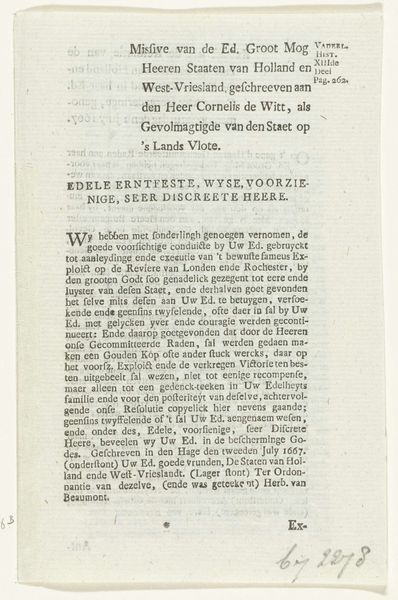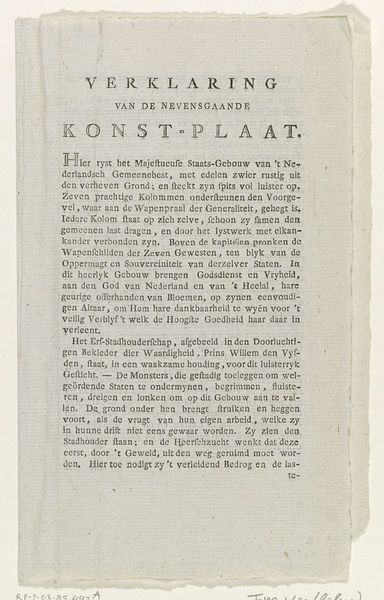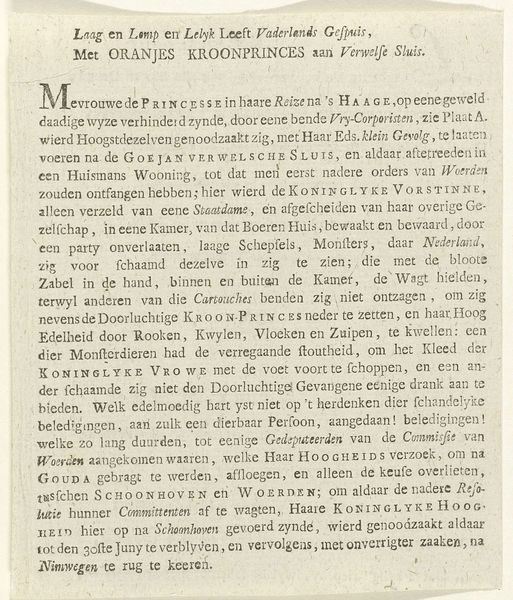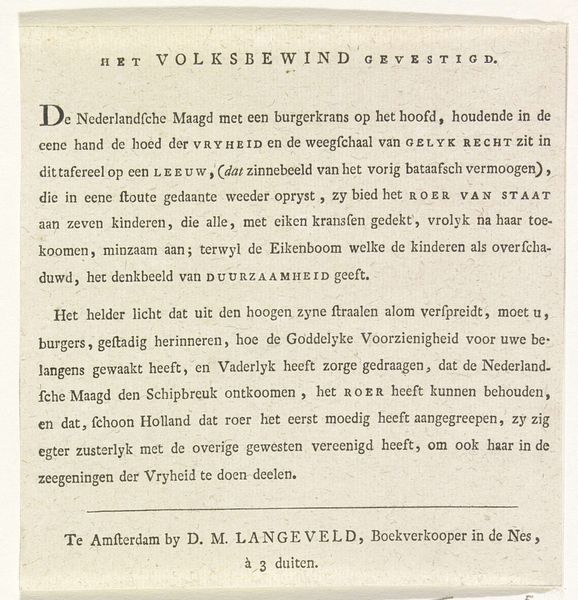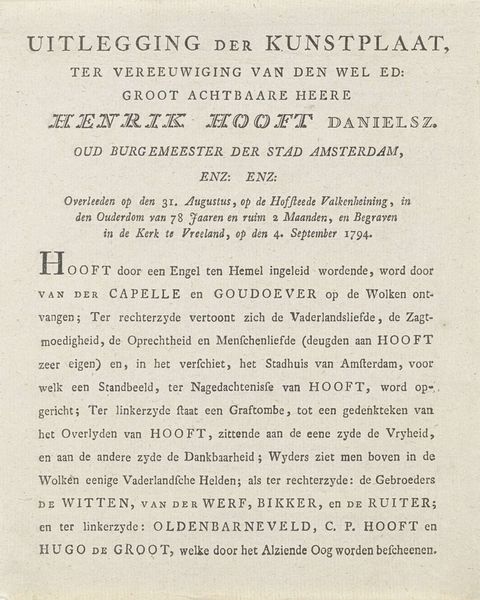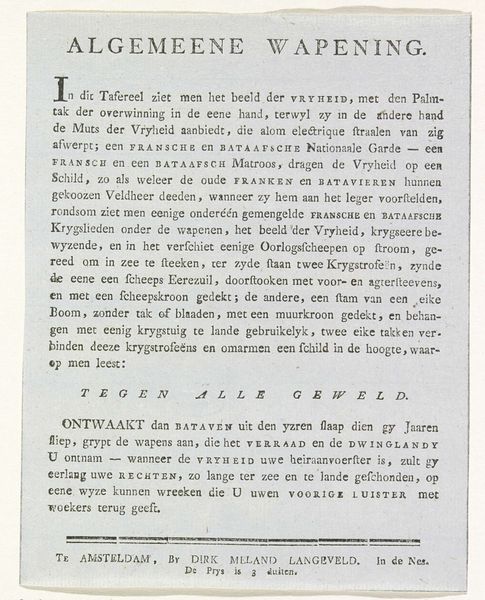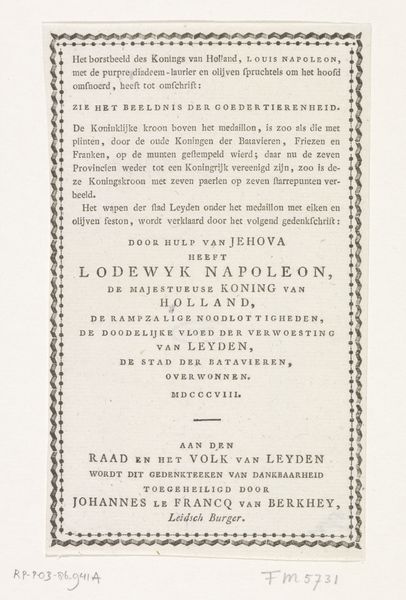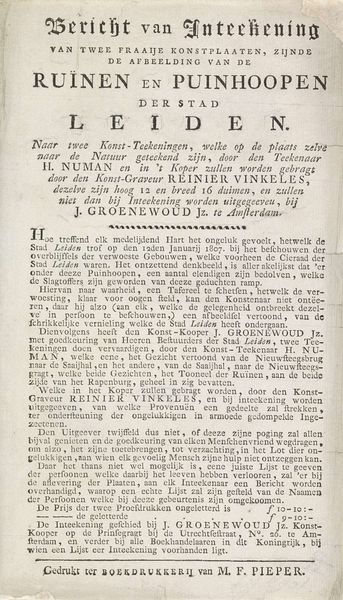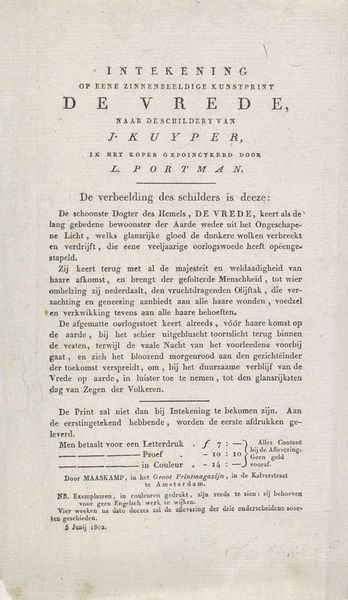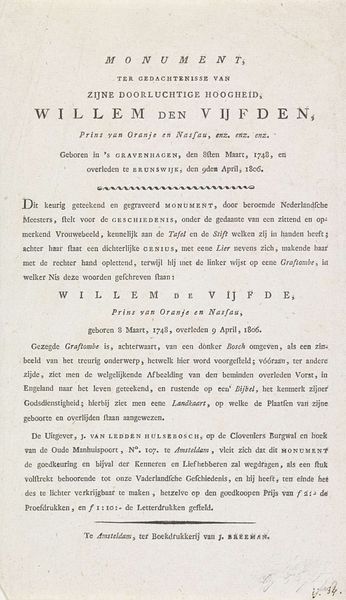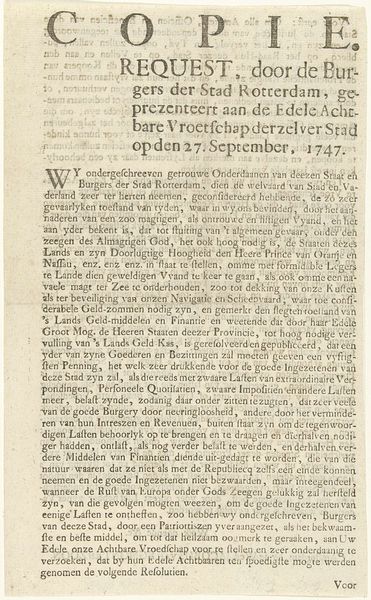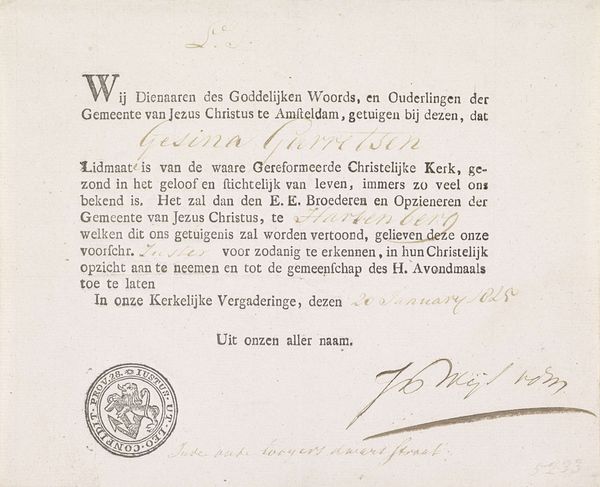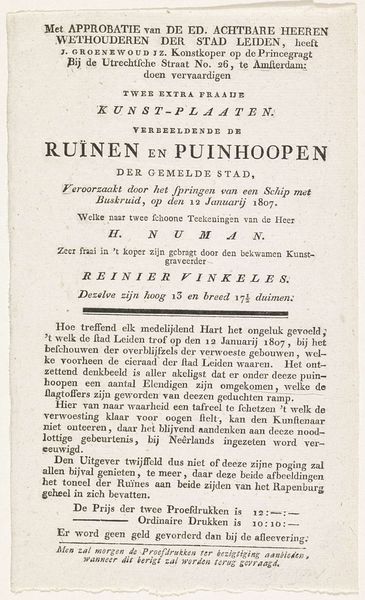
Aanstaande Eenheid en Onverdeelbaarheid van het Bataafs Gemenebest, decoratie op het Stadhuis op de Dam, 1795 (uitleg) 1795
0:00
0:00
dirkmelandlangeveld
Rijksmuseum
print, paper, typography, poster
#
neoclacissism
# print
#
paper
#
typography
#
poster
Dimensions: height 156 mm, width 146 mm
Copyright: Rijks Museum: Open Domain
Editor: Here we have "Aanstaande Eenheid en Onverdeelbaarheid van het Bataafs Gemenebest," a print on paper from 1795, created by Dirk Meland Langeveld, currently held in the Rijksmuseum. It looks like a poster with quite a bit of dense text. It seems to capture a very specific moment in history… but I'm not quite sure what to make of it. What do you see in this piece, from a historical viewpoint? Curator: This poster presents us with a fascinating window into the socio-political upheavals of the late 18th century in the Netherlands. We’re looking at a piece of political propaganda, produced during the Batavian Republic, a period of revolution and French influence. Neoclassicism emerges from its aesthetic components like straight lines and hierarchy, imbuing it with its sense of order and reason as the preferred aesthetic style for revolutionary messaging. Consider what that signifies, its preference and values? Editor: So, it's a piece of propaganda promoting a unified Batavian Republic… the text does talk about unity and indivisibility. The angel mentioned in the text is also wielding seven arrows, which they unite. But what does that represent exactly? Curator: The angel, presumably representing the Netherlands, gathers “seven arrows”, representing each Province that formed The Republic in that moment, which needed to act as one force. Notice the language used, the emphasis on burning away inequality, privilege and oppression. It speaks to the revolutionary fervor aiming to dismantle the old aristocratic order and establish a more egalitarian society, under that very important and ever-present Goddess of Reason from Classicism. How do you think its format of a “poster” changed accessibility of revolutionary materials for Dutch people? Editor: That's a great point; making this message something people could purchase or see posted publicly definitely broadened its reach! It sounds like this poster offers us a glimpse into a very turbulent, transformative moment. Thank you. Curator: And understanding this artwork really necessitates situating within its specific socio-political circumstances and neoclassical visuals! A quite productive method to approach analyzing historic works.
Comments
No comments
Be the first to comment and join the conversation on the ultimate creative platform.

